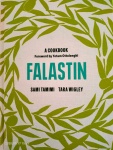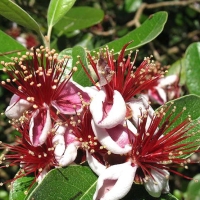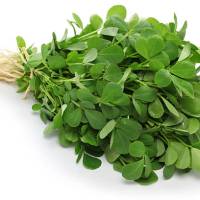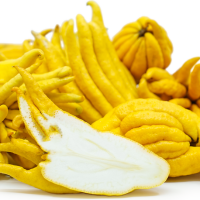Fenugreek is cultivated worldwide as a semiarid crop. This aromatic legume (Trigonella foenum-graecum) is native to Asia and southern Europe. The long, thin, curved seed pods have earned fenugreek the nicknames “cow’s horn” and “goat’s horn”. It has pleasantly bitter, slightly sweet seeds. Common names for the plant are Bird’s Foot, Greek Hayseed, Goat’s Horn and Methi.
The ancient Egyptians used fenugreek for embalming, and also burnt it as incense. Charred fenugreek seeds, carbon dated to 4000BC, have been recovered from Tell Halal, Iraq, and desiccated seeds from the tomb of Tutankhamen. Cato the Elder lists fenugreek with clover and vetch as crops grown to feed cattle.
In one first-century A.D. recipe, the Romans flavoured wine with fenugreek. In the 1st century AD, in Galilee, it was grown as a staple food. The plant is mentioned in the 2nd-century compendium of Jewish Oral Law (Mishnah) under its Hebrew name tiltan.
In classical times it was better known in Europe than it is now and most of the common European names mean ‘Greek hay’. (p302, Oxford Companion to Food)

Fenugreek seed pods 
Molecular structure of sotolone 
Sprouted fenugreek 
Fenugreek seeds 
Fenugreek seeds and leaves contain the molecule ‘sotolone’, which imparts the aroma of fenugreek in high concentrations, and maple syrup or caramel in lower concentrations. In New York in 2005, a mysterious odour of maple syrup, was eventually traced to a nearby New Jersey factory of a food additives company processing fenugreek seeds. Fenugreek is used as a flavouring agent in imitation maple syrup or tea.
Fenugreek provides a green fodder palatable to ruminants. The Romans used it as fodder for their animals, and this is still the practice in India today. The seeds are also used to feed fish and domestic rabbits. Fenugreek is used in the cosmetic industry. It is also used as a conditioning powder to produce a glossy coat on horses.
Fenugreek is easy to grow, even on a sunny balcony. It is an annual. Leaves can be harvested when flowering begins – about 8 weeks after sowing; and 4-6 months for the harvesting of seeds.
India, Pakistan, Lebanon, Egypt, France, Argentina are the major producers of fenugreek. Primarily used in Indian cookery, fenugreek is also used in dishes from Yemen, Ethiopia and Afghanistan.
The green leaves are called ‘methi’ or ‘menthi’ and they, too, have a bitter-sweet flavour. They are used as a regular green vegetable in Indian dishes such as dals and vegetables. Young leaves are also used to flavour parathas. They are used as a green staple in Yemen and for sauces in Ethiopian cooking.


Fenugreek seedlings 

My dried fenugreek
Dried leaves (Kasoori Methi) will keep for up to 12 months in airtight conditions away from light and heat. Dried leaves are perfect for whenever you want to season fatty bases like oil, yogurt, or cream. Drying is really easy and very worthwhile since the flavour remains true. However, excellent pre-prepared dried fenugreek is also freely available if you are fortunate enough to have Asian stores you can shop at.
Fenugreek seeds have with a slightly pungent sweet-bitter flavour, are small, hard, yellowish-brown, smooth and oblong shaped. Fenugreek seeds can be sprouted, and used to prepare salads. Whole fenugreek seeds should be stored in an airtight container in a cool, dark place for up to 2 years. Ground seeds should be used within 15 months of purchase. The seeds are used as a flavouring for pickles, in Kerala for fish cooking and roasted and powdered as part of muligapuri, a condiment in Indian cooking. It is used as a flavouring for the sweet Afghani dish Shola-e-olba and it is a vital constituent in the Ethiopian berbere spice mixture.
Before we get to this week’s recipe (Sweet Potato and Fenugreek Saute) here is Masterclass’s offering of eight Fenugreek recipe ideas:
- Garam Masala: There are many versions of this classic Indian blend of spices, but the addition of ground fenugreek seeds balances well with cinnamon, bay leaves, cardamom, cumin, coriander, black pepper, cloves, and mace. It is best when added at the end of cooking and can be used in Indian dishes like curries, lentils, or soups. Store spice mixture in an airtight container, in a dark, cool place.
- Niter Kibbeh: An Ethiopian clarified butter that is similar to ghee but seasoned with aromatics and spices like fenugreek, cardamom, cumin seeds, and cinnamon. Use it in stews, braised vegetables, and sauteed meat dishes.
- Aloo Methi (Indian Curry): A traditional Indian potato curry with cumin, red chilies, turmeric, fenugreek, and coriander. Fenugreek leaves are chopped and added to the sauteed potato mixture at the very end and served alongside rotis or rice.
- Methi Dal (Fenugreek Dal Stew): An Indian dal stew with cumin, chilies, toor dal (pigeon peas), turmeric, garam masala, and sauteed fenugreek leaves. Serve with roti, naan, or steamed rice.
- Methi Paneer: Paneer curry combined with pureed spinach and bitter hints of fresh fenugreek leaves. This makes a great side dish served with rotis, naan, or parathas.
- Berbere (Ethiopian Spice Rub): Berbere is a chile and spice blend used to season many Ethiopian dishes. It contains ground fenugreek, chiles, paprika, ginger, onion powder, cardamom, coriander, nutmeg, garlic, cloves, and cinnamon. Use this spice mix to season barbecued ribs, chicken, and pork dishes.
- Methi Chutney (Fenugreek Leaf Chutney): Indian chutney made with fenugreek leaves, red chilies, tamarind, jaggery, garlic, and spices. The bitterness in the leaves is well-balanced with the sweet, sour, and spicy ingredients in the dish. Serve methi chutney with paratha, roti, or dosa.
- Sprouted Fenugreek Salad: Sprouted fenugreek seeds are slightly bitter and refreshingly crunchy with tons of health benefits. It is a power house of many B vitamins (thiamin, folic acid, riboflavin, pyridoxine) and vitamin A and C as well as minerals such as iron, potassium, calcium, selenium, copper, zinc, manganese and magnesium. Try topping off your favorite salad with a handful of these healthy sprouts.















